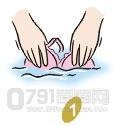面对濒于灭绝的物种,我们该做什么? 2011-07-11
面对濒于灭亡的物种,我们应当做什么?如果资源有限,如何决定我们应当挽救和保护哪些物种?
这些都是难以回答的问题。人们倾向于只挽救最显眼、最幸福的生物,如哺乳动物和鸟类,但它们对人类福祉的重要性还不及某些不太显眼的植物和动物。毋庸置疑,有限的资源使我们难以挽救所有的濒危物种,因此我们必须基于几点考虑来做出决定。这几点包括:挽救和维持物种存在的难度有多大?该物种的灭亡是否会对其他物种造成连锁反应?该物种在当前或未来是否对人类有价值?这些都是应当基于尽可能多的科学现实来做出的政治决定。
What shall we do towards the species which are suffering the danger of extinction? How to decide which species to save and protect if our resources are limited?
These are difficult questions to answer. It is tempting to try to save only the most conspicuous and beautiful creatures such as mammals and bird, but these may not be as important to the welfare of humans as are some less obvious plants and animals. Resources will inevitably prevent us from saving all threatened species so we must make decisions based on several considerations - how easy would it be to save and maintain the species, would its extinction have a knock-on effect on other species, does the species have any current or potential future economic value to humans? These are political decisions that should be made on the basis of as many scientific facts as can be obtained.
作者简介

Paul D. Taylor博士
Paul D. Taylor博士出生于英国赫尔市,获得英国杜伦大学的本科学位,并且在1977年,在该大学取得了博士学位;之后又在威尔士大学斯旺西分校Derek Ager教授的指导下,取得了博士后奖学金。在此之后,1979年Taylor博士,作为一名古生物学的研究者,加入了大英博物馆(自然历史分馆),即英国自然历史博物馆。自1990年起至2003年,Taylor博士一直是无脊椎动物和植物研究部门的主任。在世界各地,Taylor博士曾开展了一系列的科学研究工作,其中包括沙特阿拉伯、印度、日本、新西兰、俄罗斯、斯匹次卑尔根、美国以及很多西方国家。同时他曾在奥塔歌大学(新西兰),法国国立自然史博物馆(巴黎),加州大学洛杉矶分校和日本北海道大学都有过客座研究交流的经历。作为伦敦林耐学会的成员;五本著作和200多篇科学文献的作者及编辑;Taylor博士服务于很多国家和国际科学委员会,编辑委员会,目前仍是系统古生物杂志的主编。1992年,由于它在系统古生物领域发表了一篇杰出的著作,因此赢得了古生物学大奖。Taylor博士的研究领域包括无脊椎动物的化石,特别是苔藓虫。他对生物的进化以及灭亡的过程特别感爱好。在2008年12月的香港科技节上,他曾代表英国文化协会,作了两场演讲以及四场工作坊来探究有关于进化与化石的主题。
Biography – Dr Paul D. Taylor
Born in Hull, England, Paul Taylor received his undergraduate degree (BSc in Geology, 1974) from the University of Durham and stayed there to complete a PhD in 1977. After undertaking a postdoctoral fellowship under the guidance of Professor Derek Ager at the University College of Swansea, he joined in 1979 the then British Museum (Natural History), now The Natural History Museum, London, as a researcher in the Department of Palaeontology. From 1990 until 2003 he served as Head of the Invertebrates and Plants Division. Dr Taylor has carried out scientific fieldwork in various parts of the world, including Arabia, India, Japan, New Zealand, Russia, Spitsbergen, many European countries and the USA. He has held Visiting Research positions at the University of Otago (New Zealand), the Museum National d’Histoire Naturelle (Paris), University of California Los Angeles, and Hokkaido University (Japan). Fellow of the Linnean Society of London and author or editor of 5 books and more than 200 scientific articles, he has served on many national and international scientific committees and editorial boards, and is currently Editor-in-Chief of Journal of Systematic Palaeontology. In 1992 he was co-recipient of the Paleontological Society’s award for the most outstanding monograph in systematic palaeontology. Dr Taylor’s research concerns invertebrate fossils, especially bryozoans. He is interested in evolution and extinction. In December 2008 he gave two lecture and four demonstrations about evolution and fossils at the Hong Kong Science Festival on behalf of the British Council.
(本文来源:网易探索 )
相关知识
面对濒于灭绝的物种,我们该做什么?
曾经遗失的幸福 我们该拿什么来拯救?
爆发式增长的空净市场背后,我们该关注什么
开通诚信通一个多月,收到4份系统识别来的询价。感觉我的旺铺吸引不到客户来看,接下去,我该如何应对?
新浪家居全国总编戴蓓:在新的传播时代,我们怎样做传播?
家具课堂3:让儿童房更安全 我们能做什么?
恒洁卫浴:南水北调,我们能做什么
养生保健馆加盟哪家最好?力荐金骨康骨疗连锁品牌
美国的QE4又来了,我们该怎样捍卫自己的小家庭
同行的人一天都要点击我们付费好几次,我们该怎么处理。









